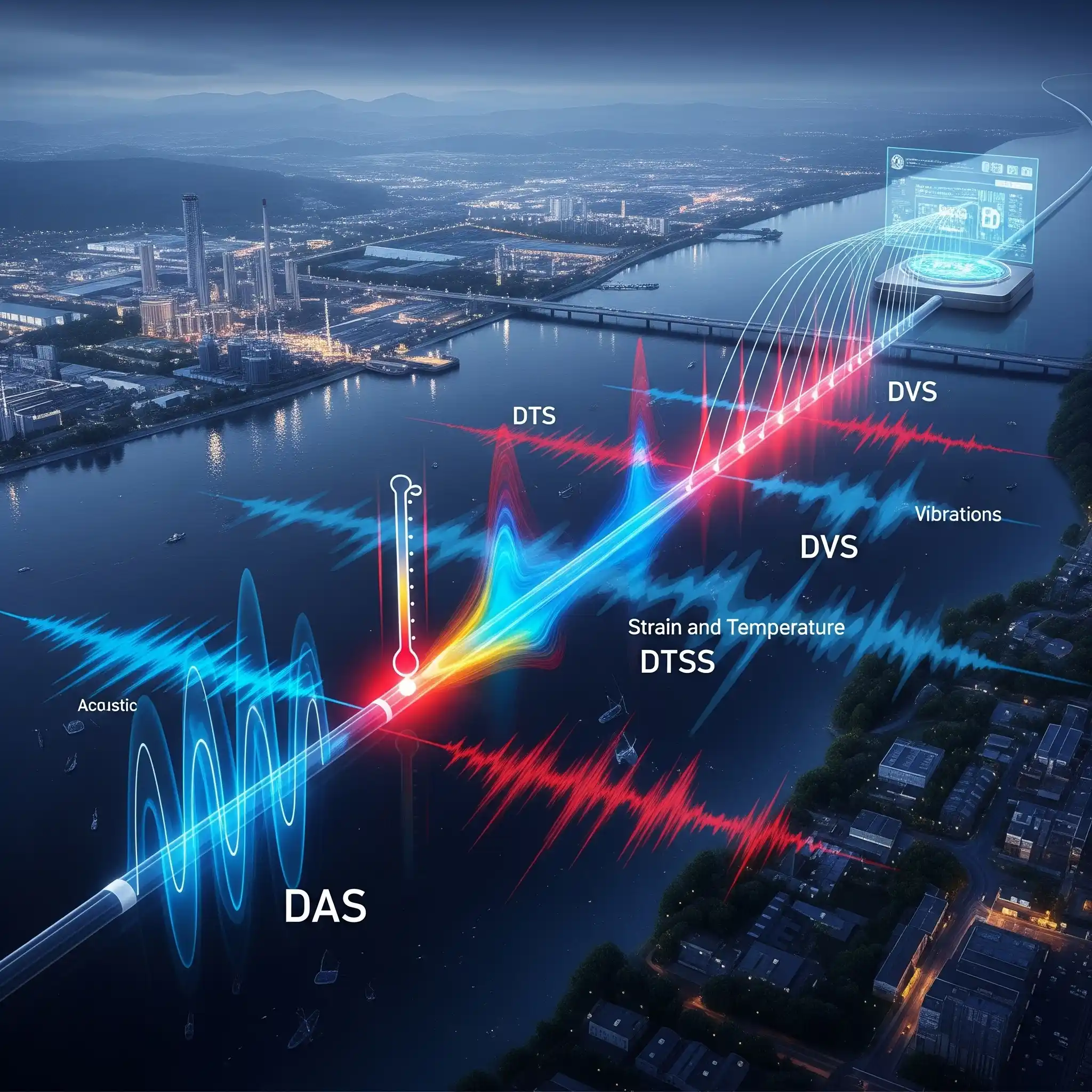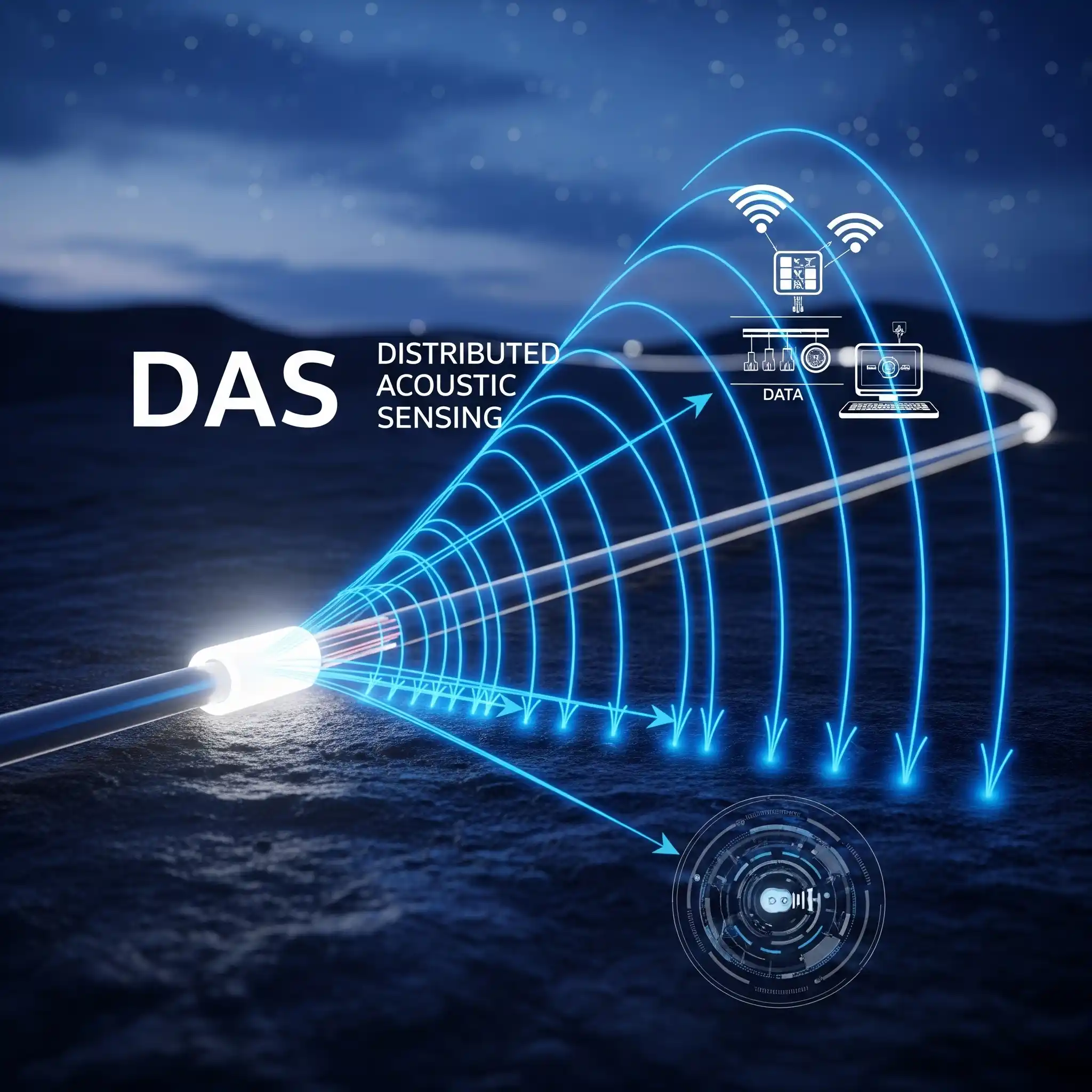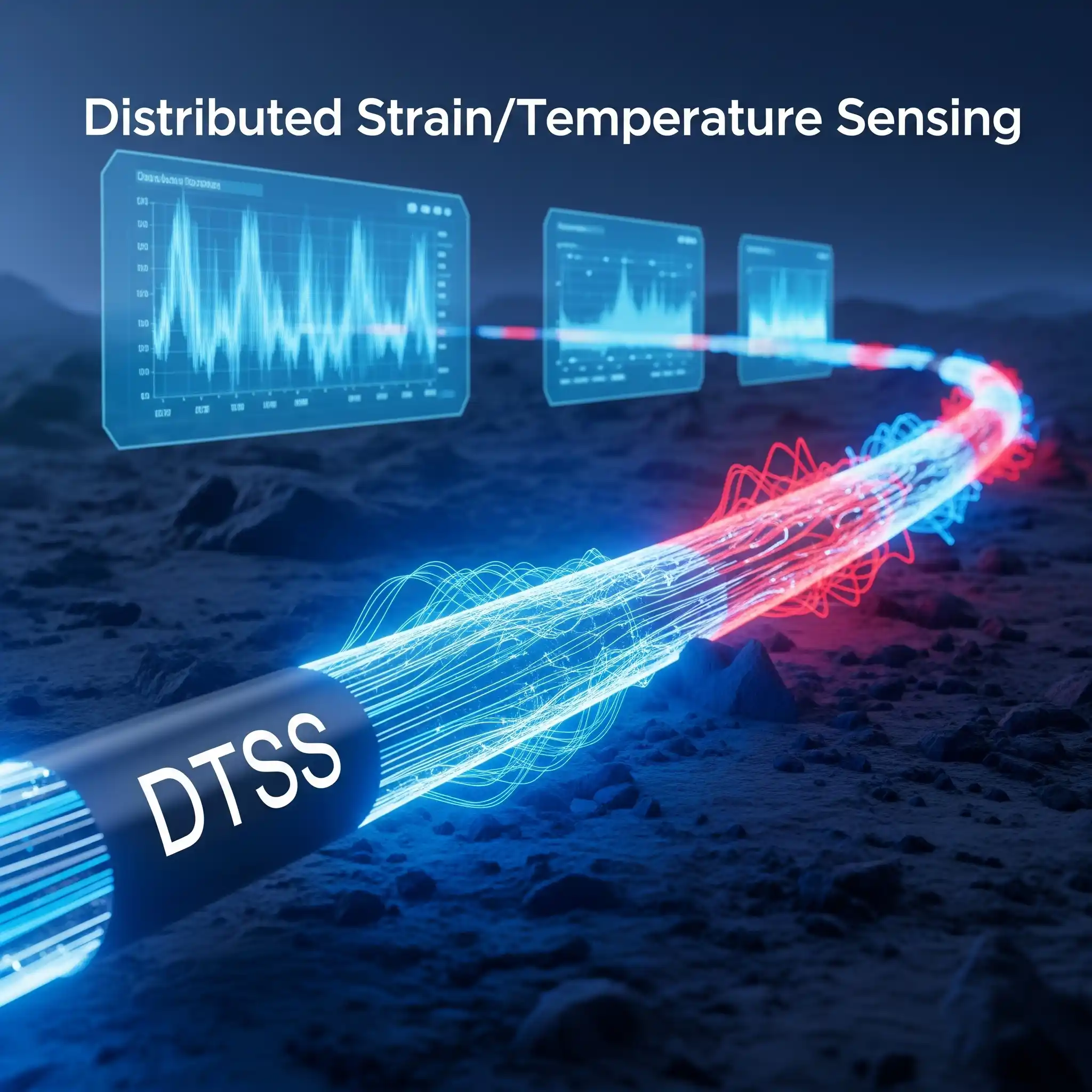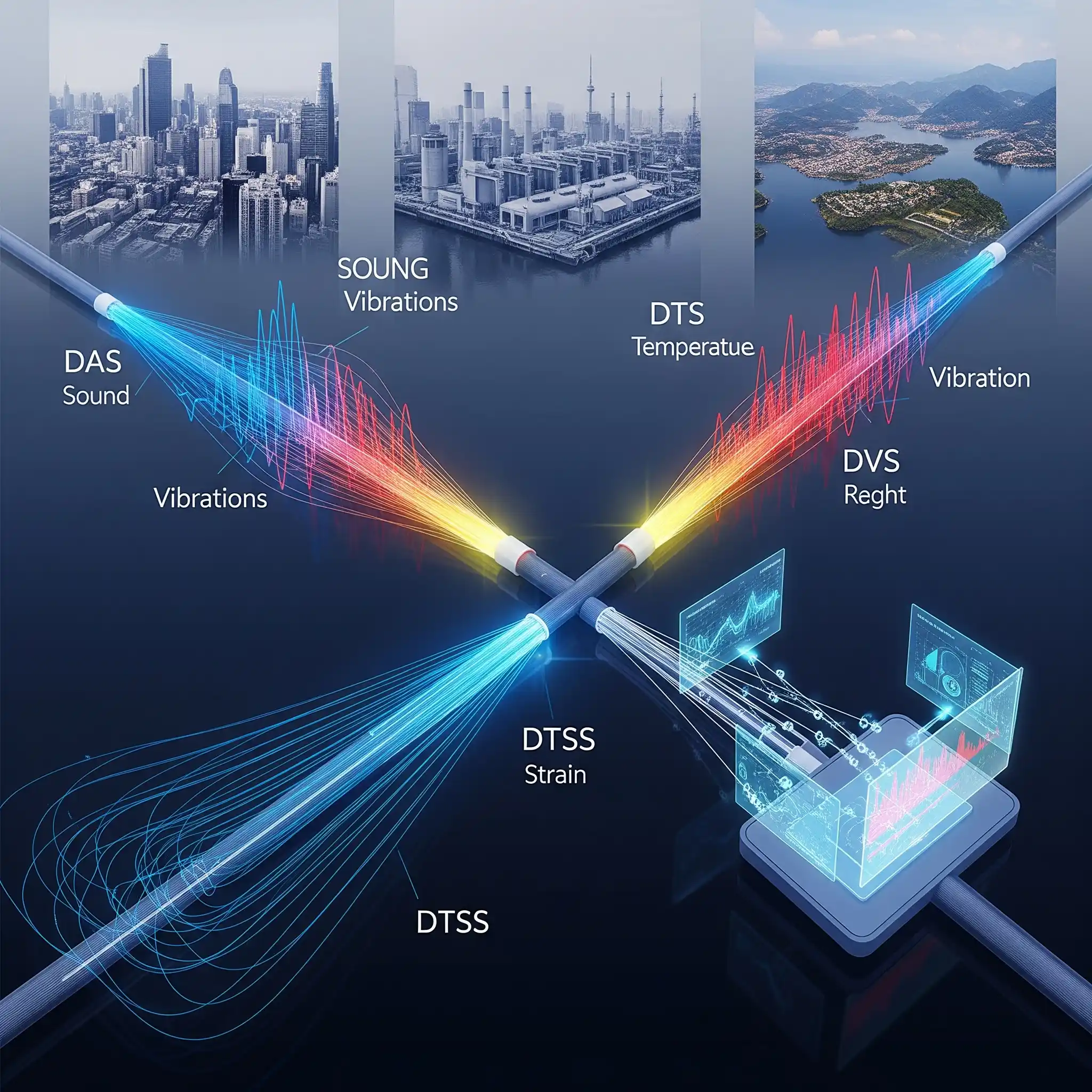DISTRIBUTED FIBER OPTIC SENSING (DFOS)
DISTRIBUTED FIBER OPTIC SENSING (DFOS)
Transforming Fiber Optic Cables into Smart Sensor Networks
In today’s world, uninterrupted monitoring of vast areas and critical infrastructures is essential for both security and operational efficiency. However, traditional point-based sensor systems fall short of this need. This is where Distributed Fiber Optic Sensing (DFOS) technology comes in. DFOS transforms ordinary fiber optic cables into highly sensitive sensor systems capable of detecting environmental data.
DFOS includes several sub-technologies—Distributed Acoustic Sensing (DAS), Distributed Temperature Sensing (DTS), Distributed Strain/Temperature Sensing (DTSS), and Distributed Vibration Sensing (DVS). While these systems share common principles, they serve different monitoring purposes. This article explores their similarities and differences, and how SAMM Teknoloji’s FOTAS platform integrates them to offer a comprehensive sensing solution.

WHAT IS DFOS? PRINCIPLES AND ADVANTAGES
At the core of Distributed Fiber Optic Sensing (DFOS) is the principle of analyzing how light sent through fiber cables is affected by environmental changes. A light pulse is transmitted through the cable, and its interaction with microscopic structures or external changes causes backscattering. By analyzing these backscatter patterns, parameters such as temperature, vibration, and strain can be monitored in real time along the entire fiber route.
Cables That Act as Sensors at Every Meter
Each meter of the fiber acts like a sensor, enabling uninterrupted monitoring of large areas with a single cable line.
Long-Range Monitoring
DFOS systems can monitor tens or even hundreds of kilometers using a centralized interrogator unit—making it a cost-effective and highly efficient solution for large-scale infrastructure.
Passive and Safe Design
The fiber in the field is completely passive, requiring no electrical power or active components. This makes it ideal for hazardous environments (e.g., explosive or flammable areas).
Resilience in Harsh Conditions
Fiber optic cables are highly resistant to external influences such as temperature extremes, humidity, chemicals, and electromagnetic interference.
Centralized Monitoring, Simplified Management
All data analysis and collection are conducted at a central unit, resulting in a simpler and more manageable monitoring system.
Real-Time Response
DFOS systems detect and analyze changes in real time, supporting rapid decision-making processes.

TYPES OF DFOS TECHNOLOGIES
Distributed Fiber Optic Sensing (DFOS) technologies are categorized based on the physical parameters they detect. There are four main types:
DISTRIBUTED ACOUSTIC SENSING (DAS)
DAS detects vibrations and acoustic effects along the fiber, and is used in areas such as perimeter security and pipeline monitoring. The analysis of backscattered data from laser pulses determines the location and type of event.
Use Cases: Border security, pipeline intrusion detection, train/vehicle passage, seismic monitoring.
FOTAS & DAS
FOTAS, developed by SAMM Teknoloji, is an advanced system that integrates DAS with AI-powered signal classification to ensure high accuracy even in noisy environments.
DISTRIBUTED TEMPERATURE SENSING (DTS)
DTS precisely detects temperature variations along the fiber. Based on the Raman scattering principle, it offers early warnings against fire and overheating risks.
Use Cases: Fire detection (tunnels, mines, warehouses), thermal anomalies, cable overheating.
FOTAS & DTS
With DTS capability, FOTAS can detect tunnel fires or cable overheating with millimetric precision and provide early warnings for temperature-related risks.
DISTRIBUTED STRAIN/TEMPERATURE SENSING (DTSS)
DTSS systems simultaneously monitor strain (expansion/contraction) and temperature changes, making them suitable for structural health monitoring and ground movement detection.
Use Cases: Monitoring of bridges, dams, buildings; landslides; pipe deformation.
DISTRIBUTED VIBRATION SENSING (DVS)
DVS focuses on tracking regular vibration patterns, particularly in machinery or structures. It operates on Rayleigh scattering principles.
Use Cases: Industrial machinery monitoring, traffic monitoring, railway tracking.



FOTAS: SAMM TEKNOLOJİ’S DISTRIBUTED FIBER OPTIC SENSING (DFOS) SOLUTION
FOTAS combines both DAS and DTS on a single platform, offering simultaneous acoustic and temperature monitoring.
Scalable Architecture: Adaptable from small facilities to international infrastructure projects.
Trusted Globally: Developed in Türkiye, FOTAS is used by organizations like Optokon (Czech Republic), PEMEX (Mexico), and BOTAŞ (Türkiye).
AI-Powered Analysis: Equipped with artificial intelligence algorithms that classify events and minimize false alarms.
Field-Ready Performance: Performs reliably in environments with humidity, temperature fluctuations, and electromagnetic fields.
Seamless Integration: Easily connects to existing systems such as SCADA or BMS.
Data-Driven Monitoring: Offers user-friendly interfaces, event history, reporting, and alarm management features.
MONITORING THE FUTURE WITH DISTRIBUTED FIBER OPTIC SENSING (DFOS)
Distributed Fiber Optic Sensing (DFOS) technologies are not only the backbone of today’s security and monitoring solutions but also the foundation of tomorrow’s intelligent infrastructure. By turning every centimeter of cable into a sensor, DFOS enables robust, data-driven decision-making mechanisms powered by big data analytics.
Discover FOTAS and prepare your infrastructure for the future.

